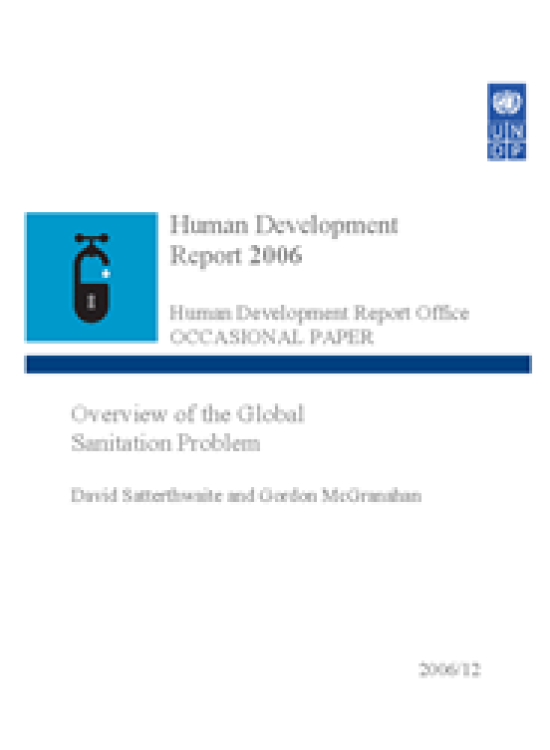Overview of the Global Sanitation Problem

Download Report by Language
Document
satterthwaitemcgranahan.pdf
(290.72 KB)
Citation
Satterthwaite, David, McGranaham. 2006. Overview of the Global Sanitation Problem. New York.
Overview of the Global Sanitation Problem
Posted on: January 01, 2006
Today, more than one in three people worldwide lack sanitationi and rather more lack good quality sanitation.ii The numbers lacking sanitation have grown considerably over the last four decades – despite ‘universal provision for water and sanitation’ being a key goal in development discussions since the early 1970s.iii Almost all of those lacking sanitation live in low- and middle-income nations; most have low-incomes; most live in Asia (80 percent) and Africa (13 percent).iv Without a rapid increase in the scale and effectiveness of sanitation programmes, the MDG sanitation target for 2015 will be missed by at least half a billion people – and it is in the regions with the worst provision that progress is most lacking.v As a result, hundreds of millions of people will suffer the indignity of having no safe and convenient place to defecate. Tens of millions of people, most of them children, will become ill, and many will die. This is a problem that will not be addressed without working with the women, men, and children who lack provision, and supporting a range of choices for provision for toilets and personal and household hygiene from which they find ones that work for them. To stress the obvious - improved sanitation requires (often large numbers of) women, men and children to voluntarily change their defecation habits. Improving sanitation cannot work if what is provided is too inconvenient or too costly for them to use. The perfect design for a pit latrine has limited value if women cannot use it safely 24 hours a day or children are frightened to use it (because it is dark or because they are frightened of falling into the pit). Well maintained communal or public toilets have limited value if they are not open all the time or if they charge too much for low-income groups to afford to use them. Flush toilets don’t work if water supplies to flush them are intermittent. Ecological sanitation will not return nutrients to the soil unless it is easy, convenient and cheap to get ‘the nutrients’ to crop-growers that want them.

